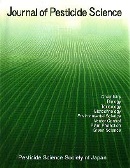30 巻, 4 号
選択された号の論文の19件中1~19を表示しています
- |<
- <
- 1
- >
- >|
Review
-
2005 年 30 巻 4 号 p. 345-353
発行日: 2005年
公開日: 2005/11/29
PDF形式でダウンロード (212K)
Original Articles
-
2005 年 30 巻 4 号 p. 354-360
発行日: 2005年
公開日: 2005/11/29
PDF形式でダウンロード (441K) -
2005 年 30 巻 4 号 p. 361-367
発行日: 2005年
公開日: 2005/11/29
PDF形式でダウンロード (124K) -
2005 年 30 巻 4 号 p. 368-377
発行日: 2005年
公開日: 2005/11/29
PDF形式でダウンロード (266K) -
2005 年 30 巻 4 号 p. 378-383
発行日: 2005年
公開日: 2005/11/29
PDF形式でダウンロード (428K) -
2005 年 30 巻 4 号 p. 384-389
発行日: 2005年
公開日: 2005/11/29
PDF形式でダウンロード (652K) -
2005 年 30 巻 4 号 p. 390-396
発行日: 2005年
公開日: 2005/11/29
PDF形式でダウンロード (795K) -
2005 年 30 巻 4 号 p. 397-402
発行日: 2005年
公開日: 2005/11/29
PDF形式でダウンロード (672K)
Notes
-
2005 年 30 巻 4 号 p. 403-405
発行日: 2005年
公開日: 2005/11/29
PDF形式でダウンロード (102K) -
2005 年 30 巻 4 号 p. 406-408
発行日: 2005年
公開日: 2005/11/29
PDF形式でダウンロード (118K) -
2005 年 30 巻 4 号 p. 409-413
発行日: 2005年
公開日: 2005/11/29
PDF形式でダウンロード (110K)
PART II (IN JAPANESE)
英文編掲載報文・短報等の要旨
-
2005 年 30 巻 4 号 p. 415-417
発行日: 2005/11/20
公開日: 2014/06/08
PDF形式でダウンロード (253K)
解説
-
原稿種別: 解説
2005 年 30 巻 4 号 p. 418-425
発行日: 2005/11/20
公開日: 2014/06/08
PDF形式でダウンロード (461K)
談話室
-
原稿種別: 談話室
2005 年 30 巻 4 号 p. 426-427
発行日: 2005/11/20
公開日: 2014/06/08
PDF形式でダウンロード (179K)
書評
-
2005 年 30 巻 4 号 p. 428
発行日: 2005/11/20
公開日: 2014/06/13
PDF形式でダウンロード (139K) -
原稿種別: その他の資料
2005 年 30 巻 4 号 p. 429-432
発行日: 2005/11/20
公開日: 2014/06/08
PDF形式でダウンロード (165K)
-
2005 年 30 巻 4 号 p. 433-435
発行日: 2005/11/20
公開日: 2014/06/13
PDF形式でダウンロード (28K) -
2005 年 30 巻 4 号 p. 436-437
発行日: 2005/11/20
公開日: 2014/06/13
PDF形式でダウンロード (29K) -
2005 年 30 巻 4 号 p. 439-444
発行日: 2005/11/20
公開日: 2014/06/13
PDF形式でダウンロード (51K)
- |<
- <
- 1
- >
- >|
